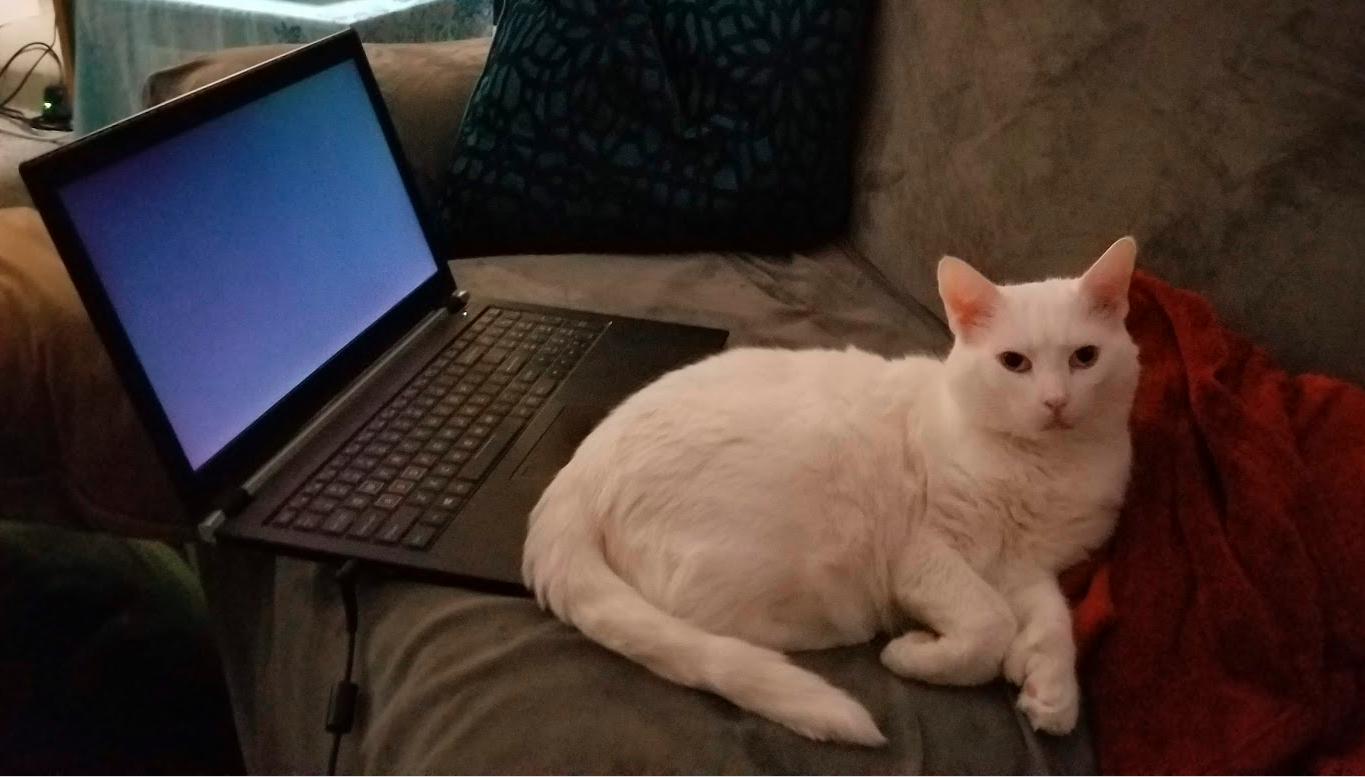Many companies have been forced to switch employees to working from home or are strongly considering it during the current COVID-19 pandemic. Here at Tricky Fast, we’ve always been a virtual company with all employees working from home. As the president, I’ve been managing remote teams for the better part of 15 years starting at Etsy.com in 2007. In this post, I’ll provide answers to some of the most common questions and concerns, go over some best practices, and provide some examples. The hope is that this will help companies prepare and succeed with an entirely remote workforce.
Questions
How do I know that my employees aren’t just slacking off? For most employees, especially programmers, productivity is likely to go up. There’s less distractions, they’re in a more comfortable environment, and they likely have more flexibility with their time. There are definitely a small percent of workers who have difficulty focusing and staying productive in a more self directed environment. If as a manager, you’ve been paying attention, you can probably already pick out who these people are. The best way to suss out underperformers is to have daily standup meetings where the team takes turns answering what they did yesterday, what they plan to do today, and if they have any blockers. If you pay attention to updates during those, it should be clear who is taking much longer on what should be quick tasks. My recommendation at this point is to talk to them and see what they identify as the reason. Often they will be open that working from home is hard. If that’s the case, refer them to my next article which will be about best practices for employees working from home and how to stay productive. In general, lack of productivity is unlikely to be a problem with working from home.
What about security? Won’t my data/code/etc be less secure? This is another common concern that’s generally a non-issue. Unless your office firewall is locked down like Fort Knox, there’s really not going to be much of a difference here. There are some clear steps you can take to beef up security, though. An obvious first step is having a VPN. For most companies, this will be a requirement. A VPN will allow remote employees to securely connect directly to the office (or cloud) network with an encrypted link. This is much preferable to making formerly private servers open to public internet traffic. There are free VPNs such as OpenVPN or Hamachi. Hamachi (free for small teams) is trivial to set up while OpenVPN or other options will likely involve a network professional. For those who are particularly security focused, many VPNs can be configured to route ALL network traffic through them. This would mean all traffic from logged in computers to the outside world would go through your existing firewall (and also take up more bandwidth). The other important thing to do is to ensure that employees are doing all work on company hardware. If this isn’t an option, then allowing them to use Remote Desktop or some other remote control software to access their office desktops over the VPN is a good compromise. However, this doesn’t work for some things such as game development that require high fidelity graphics. For extra security conscious companies, it is possible to encrypt all drives of the employees work computers with software such as TrueCrypt. This requires a password at boot and without it, the data is encrypted. This is useful for laptops especially in the case they’re stolen. In terms of employees intentionally distributing sensitive company data, the risk here is no greater than in an office setting, so this isn’t something that should be worried about more than normal.
How will employees collaborate? Random meetings in the halls are very important to our culture and creativity! The best way to foster this is to have a robust online chat system like Slack or Discord with appropriate channels set up. Encourage workers to make use of the audio/video chat and screen sharing that these platforms allow. While text chat is great for many things, it does lack in a lot of social cues that in person discussions have. Using video chat often will alleviate this issue almost completely. As part of this, employers should make sure employees have access to webcams and quality headsets. There’s nothing worse than spending half of a call trying to fix technical issues due to poor hardware. There should be a general company wide Slack or Discord channel for work related chat and one for non work-related things. Additionally, having one or more channels per project or per discipline (or both) is extremely helpful. It’s better to have a discussion about sort algorithms in an engineering only chat. The goal is to ensure that the participants in each channel aren’t overwhelmed by the contents to the point of tuning them out. Project managers / producers should monitor traffic and direct discussions that are off topic to the appropriate channels. Employees should be encouraged to share ideas and other discussions in the chat. If a side chat is going on that may be interesting to others, they should be encouraged to invite anyone from the general channel who wants to be involved. Project managers and producers can help with this as well.
Won’t my non-exempt employees sue me for making them work overtime? No. Just no. That’s not how this works. That’s not how any of this works. Pay them for time and overtime worked and there’s no problem here. If you’re concerned about this, tell them to not work overtime without getting an approval in writing. If anyone disobeys that, pay them and then discipline them for it. Realistically, this isn’t going to be a problem unless you’re already breaking the laws here.
Best Practices
Some of these are covered above: use a VPN, have employees use company hardware, set up Slack or Discord, and daily standup meetings. Beyond these are some other recommendations:
- Allow employees flexibility with their daily schedule. Especially during this time where schools and daycares are closed, it’s going to be important for employees to manage their own schedules. Even when things are normal, this can be very helpful. Part of this, though, is requiring core hours where employees overlap. This makes it easier to schedule meetings and to know when someone may be available for a discussion or to fix an issue.
- If you have a mixed situation where some employees are working from home and others are still at the office, be careful. This can easily lead to one group being (or feeling) left out. It can be very difficult to manage, so it’s best avoided when possible. However, there are ways to mitigate the effect. If more employees are working from home, then those still in the office should be required to use Slack when discussing anything important to anyone else. If more employees are working in the office, then one solution is to have those employees set up a video chat with their work computers and leave this up during the day. It’ll allow them to hear what’s going on and to respond. I used this when working remote at 38 Studios. It was excellent at reducing the feeling of being left out of things going on at the office.
- Use work tracking software like Jira, Asana, or Trello to keep track of tasks and projects. Many companies will already be using these, but they’re even more important for remote teams. Make sure that all work being done on a project is tracked in this way. Only having this information in Slack can make it difficult to find.
- Make use of Slack/Discord plugins. There are many of them, and they can make it easier for people to keep track of tickets, source code commits, and even meetings.
- Follow up with employees in one on one meetings regularly to see how working from home is going for them and address any issues promptly. These should be done over video chat.
- Use collaborative tools such as Google Docs so that multiple people can edit the same document at a time. There are even virtual whiteboard apps online that can be used.
- If your business requires specialized hardware that you have limited quantities of, consider connecting it to machines at the office and allowing employees to use Remote Desktop to obtain access.
- Be respectful of employees’ time. If they’re working from home and they don’t typically work weekends, don’t expect them to start doing so just because they have everything set up and available.
- Establish simple ways for cross team support. Got a question for an engineer? Head to the engineering support channel. All engineers who aren’t heads down on something should be active in there.
- Encourage employees to be vocal about when they will be away from their desk. It’s frustrating to message someone with something important and have them not respond. Slack and Discord have facilities that can be used to denote being away.
Examples
George the artist encounters a blocking bug in a tool he’s using. In an office setting, he may just walk over to the engineering area and ask for support. With a virtual office, he should ask in the engineering support channel who has time to help him. Mary does, so George and Mary start a private chat to discuss the issue. They also begin a video conference where George shares his screen to visually show Mary what’s going on. Mary fixes the problem and lets George know over the chat when it’s ready for him to use.
Jen the engineer is tasked with creating a new feature that involves multiple people from various disciplines. She wants to make sure that she addresses everyone’s needs. In an office setting, she would schedule a meeting over email with all required people. With a virtual office, she can create a new channel or private chat for the feature and include all the stakeholders. In that channel, they can meet over video chat, anyone can screen share to show what they need, and Jen can show off progress. They can iterate either in the chat or over video calls. When the feature is complete, the chat channel can be removed.
Samantha and Frank need to work together to assemble a slide show presentation. In an office setting, they might go to Frank’s desk and have
Samantha look over his shoulder while they build the presentation. In a virtual office, Google Slides can be used collaboratively, and both
Samantha and Frank can work on their respective parts of the presentation simultaneously. Comments can be created inside the document that expose any issues. Google docs even have built in chat.
For More Info
I am offering limited free consulting to managers and executives looking to move their workforce remote due to the COVID-19 pandemic. Please feel free to get in touch with me by emailing mike@trickyfast.com.






